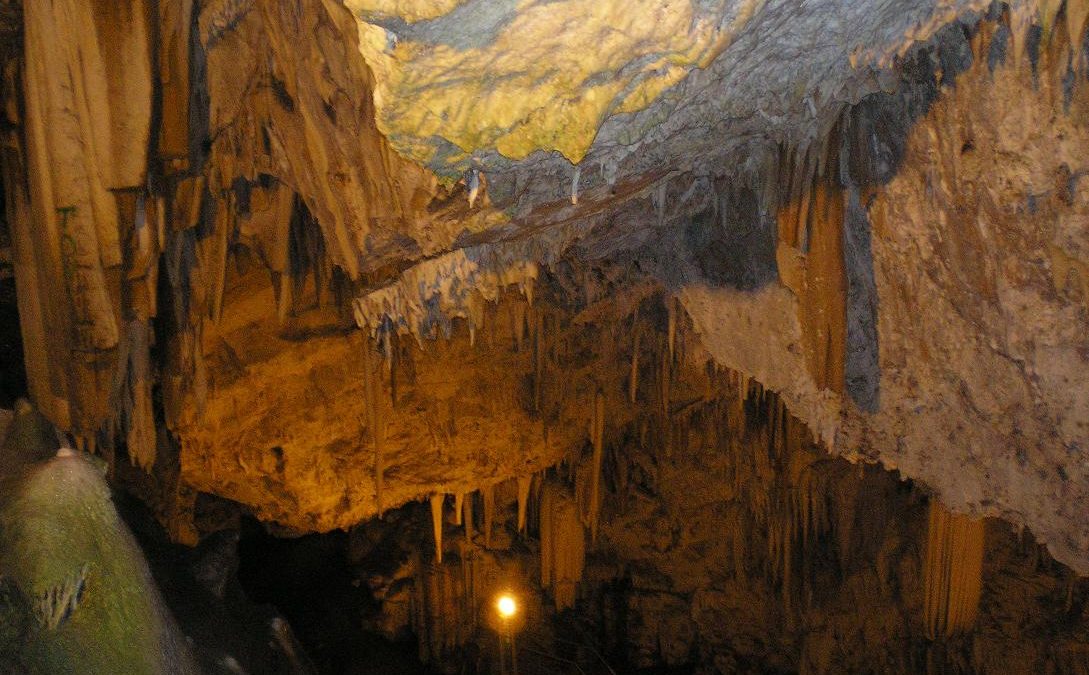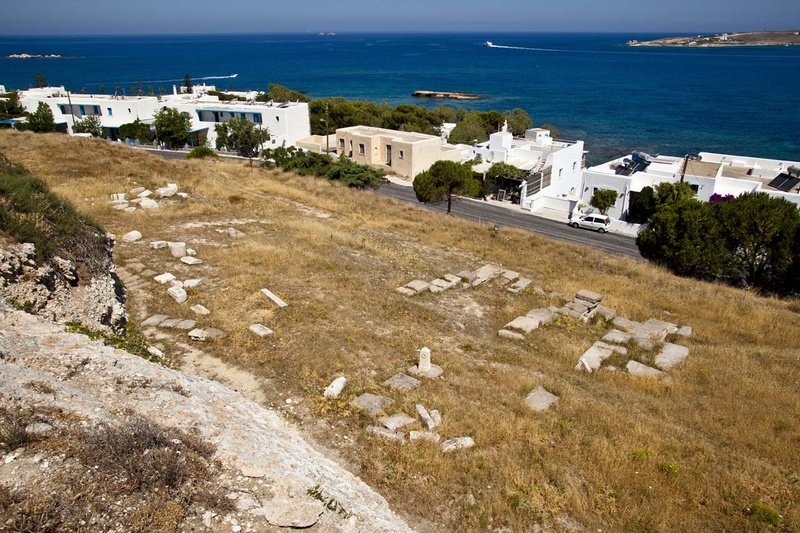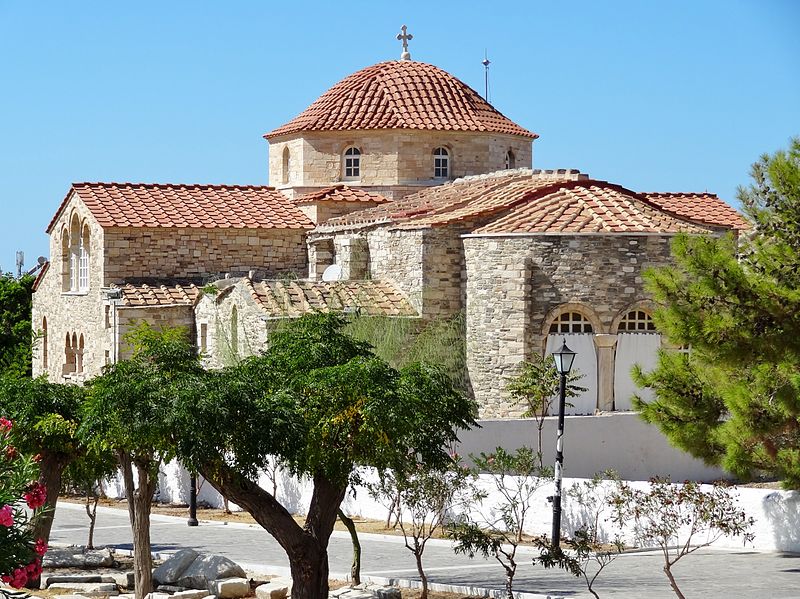Antiparos Cave is situated just 8 km from Antiparos town (Chora). It is also called the Cave of Agios Ioannis church.
Antiparos Cave is very large, and extends at several levels.
Its maximum depth is about 85 meters, it has a length of 89 meters and its maximum width is almost 60 meters.
Inscriptions on the walls of the cave mark are proof of the many prominent visitors of the cave dating back to the Neolithic period. A few of those visitors include: Alexander the Great, King Otto, the marquis de Nointe (ambassador of France) and the lyric poet Archilochus of Paros.
Originally the Cave of Agios Ioannis was used to provide shelter and was later used as a worship place for the goddess Artemis.
Stalactites and stalagmites in the cave, which change form according to the inspiration and imagination of the each visitor. It is located 171 meters above sea level, is precipitous, and its interior temperature in wintertime is at about 15 degrees Celsius (59 degrees fahrenheit). It has an area of approximately 5,600 square metres. Its maximum depth reaches about 85 metres and the descent takes place easily and securely, by a cement staircase made up of 411 steps.
The Cave is divided into the ‘Antechamber’ and three additional halls: ‘The Chamber of the Stone Waterfalls’; ‘The Chamber of the Cathedral’; and, ‘The Royal Chamber’.
The huge stalagmite found at the entrance is 45 million years old, the most ancient in Europe, and is called ‘The Huge Central Column’.
‘The Royal Chamber’ was ‘christened’ as such on account of the visit paid there by King Otto and Queen Amalia. Its adornment is not impressive, but it is commanding nonetheless.
The two picturesque little churches at the entrance are named Agios Ioannis (Ai Yiannis) Spiliotis and Zoodohos Pigi.
The lyric poet Archilochus of Paros is said to have left an inscription in the cave. In 1673, marquis de Nointel, French ambassador to the Ottoman Empire visited the cave for three days with numerous companions and celebrated mass on Christmas Day in it. Later, visitors who carved their names include Lord Byron and the first king of Greece, Otto.
During the German occupation, part of the cave was destroyed.
At the entrance of the cave the beautiful church of Agios Ioannis Spiliotis was build.
On the eve of and the day of Ai Yiannis—on 7 and 8 of May, respectively—a celebration is held with local food and drinks.
Source: Visitgreeceabove.com





